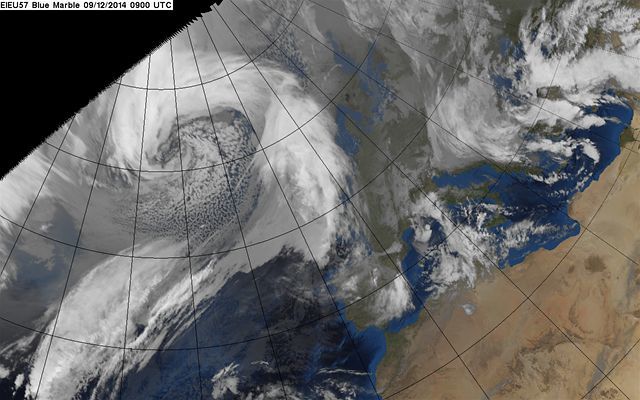Residents of Tayside and Fife are being urged to batten down the hatches before fallout from a North Atlantic “weather bomb” reaches the east coast.
The Met Office has issued a yellow “be aware” weather warning for most of the UK as gale force winds sweep across the country while a more severe amber “be prepared” alert is in place for much of Scotland.
The “weather bomb” is the result of a phenomenon meteorologists call “explosive cyclogenesis,” a term used to describe a storm that develops rapidly in the North Atlantic.
It occurs when dry air from the stratosphere flows into an area of low pressure, causing air within the depression to rise very quickly and increase its rotation.
This in turn deepens the pressure and creates a more violent storm.
The rapidly growing storm has forced the cancellation of many of CalMac’s ferries in the west today.From The Archives blog: Could weather bomb match December storm of 1894?Winds have already reached 66mph in Stornoway and 99mph on Aonach Mor beside Ben Nevis.
The storm has also caused “phenomenal” sea swells. According to the BBC, waves the height of six-storey buildings have been forming in the Atlantic.
Closer to home, high vehicles, caravans, trailers and motorcycles were banned from the Forth Road Bridge as winds neared 50mph while the Tay Road Bridge introduced restrictions on high-sided vehicles around 11.30am.
A Met Office spokesman said the “weather bomb” itself will land just south of Iceland but the effects would be felt across Scotland, albeit much worse in the west.
He said winds on the east coat will reach up to 50 miles per hour this afternoon and last for around 48 hours before easing off on Thursday, There may also be wintry showers overnight.
And he warned that overnight temperatures may drop below freezing in rural areas, causing particularly hazardous driving conditions.
He said: “Drivers should bear in mind the wind and the rain which will cause some pretty awful driving conditions. People should really ask themselves if they need to make that journey, particularly at night.”
